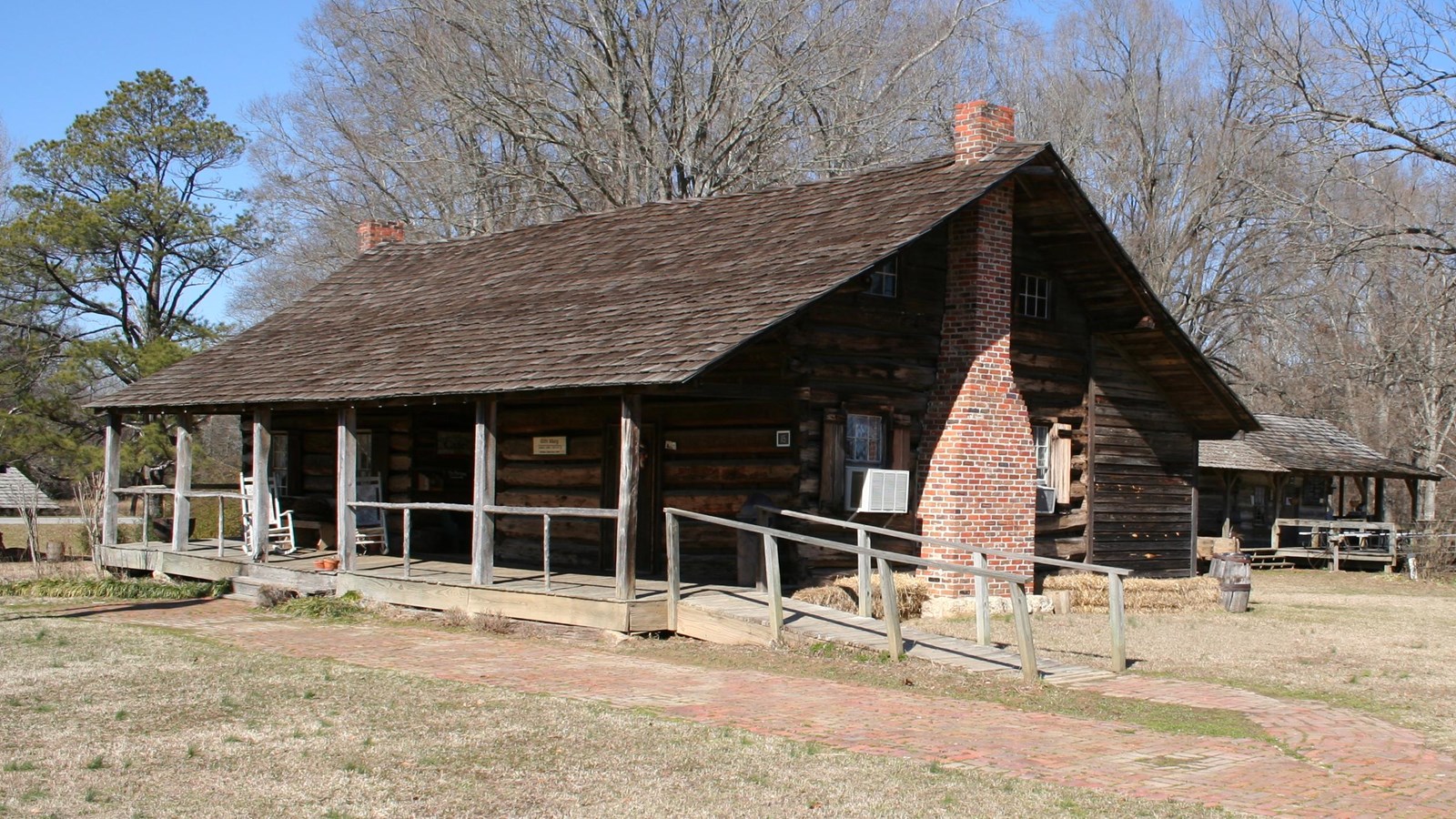Last updated: January 11, 2024
Place
French Camp, Milepost 180.7

NPS photo
Quick Facts
Location:
Natchez Trace Parkway, Milepost 180.7 at French Camp, MS
Significance:
Historic Stand Site
Amenities
2 listed
Historical/Interpretive Information/Exhibits, Parking - Auto
Louis LeFleur first traded with the Choctaws at a bluff now part of Jackson, Mississippi. About 1812, he established his stand 900 feet to the northeast on the Natchez Trace.
Because of the LeFleur's nationality, the area was often called "French Camp," a name retained by the present village.
LeFleur married a Choctaw woman. Their famous son who changed his name to Greenwood Leflore, became a Choctaw chief and a Mississippi State Senator. Named after him are the city of Greenwood and the county of Leflore.
Why were there stands along the Natchez Trace?
The need for stands appeared when the US government wanted to improve the Natchez Trace into a post road to deliver mail from Nashville, TN to Natchez, MS. In 1800 most of the Natchez Trace ran through Choctaw and Chickasaw lands. A limited number of homesteads offered provisions on Chickasaw land.
As trade and travel increased down the Mississippi River, so did stands along the Natchez Trace. Many of these stands were owned by frontiersmen and their American Indian wives. While the United States did not recognize women’s rights to own land, many American Indian nations did, including the Chickasaw and Choctaw. Tribes preferred to manage their own businesses on tribal land. During this time, stands generally bore the last name of the owners.
What were the stands like?
The stands along the Natchez Trace varied widely in size and services offered. Many stands offered very basic food along with meager accommodations. Advertisements by stand owners in Natchez newspapers focused on the travelers’ diet along the Natchez Trace. The highlights included ground coffee, sugar, biscuits, bacon, and whiskey. Corn was a staple served to Natchez Trace travelers. It usually took the form of hominy, a dish prepared by soaking the corn in lye. Lucky travelers would have the option to sleep on a crude bed, but a cleared spot on the floor was what they expected. Due to cramped and dirty conditions inside the stands, many travelers chose to sleep outside on the porch or yard under the stars.
See Historic Stands along the Old Natchez Trace for additional information.
Just off the Natchez Trace Parkway you can visit our friends at the French Camp Historic Village and discover how early American life used to be in this quaint log cabin village.
Because of the LeFleur's nationality, the area was often called "French Camp," a name retained by the present village.
LeFleur married a Choctaw woman. Their famous son who changed his name to Greenwood Leflore, became a Choctaw chief and a Mississippi State Senator. Named after him are the city of Greenwood and the county of Leflore.
Why were there stands along the Natchez Trace?
The need for stands appeared when the US government wanted to improve the Natchez Trace into a post road to deliver mail from Nashville, TN to Natchez, MS. In 1800 most of the Natchez Trace ran through Choctaw and Chickasaw lands. A limited number of homesteads offered provisions on Chickasaw land.
As trade and travel increased down the Mississippi River, so did stands along the Natchez Trace. Many of these stands were owned by frontiersmen and their American Indian wives. While the United States did not recognize women’s rights to own land, many American Indian nations did, including the Chickasaw and Choctaw. Tribes preferred to manage their own businesses on tribal land. During this time, stands generally bore the last name of the owners.
What were the stands like?
The stands along the Natchez Trace varied widely in size and services offered. Many stands offered very basic food along with meager accommodations. Advertisements by stand owners in Natchez newspapers focused on the travelers’ diet along the Natchez Trace. The highlights included ground coffee, sugar, biscuits, bacon, and whiskey. Corn was a staple served to Natchez Trace travelers. It usually took the form of hominy, a dish prepared by soaking the corn in lye. Lucky travelers would have the option to sleep on a crude bed, but a cleared spot on the floor was what they expected. Due to cramped and dirty conditions inside the stands, many travelers chose to sleep outside on the porch or yard under the stars.
See Historic Stands along the Old Natchez Trace for additional information.
Just off the Natchez Trace Parkway you can visit our friends at the French Camp Historic Village and discover how early American life used to be in this quaint log cabin village.
